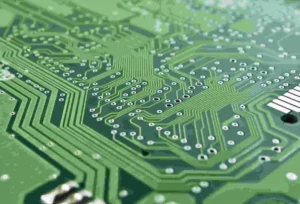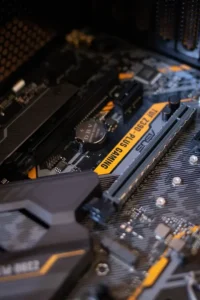Korea Times published an article recently, in which it stated that ‘Chiplets have emerged as a catalyst and are reshaping the global semiconductor industry’. The article also says how Huawei, a Chinese multinational technology corporation, has embraced chiplet technology and cultivated a self-reliant, and robust supply chain.
What are Chiplets?
Chiplets are individual semiconductor components or microchips that are manufactured and designed for specific tasks and are integrated into a larger circuit. According to The New York Times, many established companies like Apple, AMD, Amazon, Tesla, IBM, and Intel have been introducing products with the help of chiplet technology.
Chiplet technology is a significant advancement in Very Large-Scale Integration (VLSI) that is gaining traction in the semiconductor industry. VLSI courses are evolving to incorporate chiplet design concepts, preparing students for the future of chip design and manufacturing.
Chiplet Design
These individual semiconductor components function on a modular design approach that allows a bunch of smaller components to do the work of a much larger one. These smaller components or modules are designed to perform specific functions or tasks and can be combined or interconnected to create a larger, integrated system. Physical design is the process of determining the physical layout of a circuit on a chip, including the placement of transistors, and other components. Chiplet design adds an additional layer of complexity to this process, as it requires careful consideration of the interactions and communication.
Chiplets are aligned with the spirit of Moore’s Law in the sense that they provide a pathway for the semiconductor industry to continue advancing and improving technology. Even though the literal interpretation of Moore’s law suggests doubling the number of transistors on a single chip,
Modular design is found in manufacturing, architecture, software, and electronics. It’s most useful when you need adaptable, easy-to-maintain, and scalable systems, making complex tasks efficient and cost-effective.
How are chiplets revolutionizing the semiconductor industry?
In 2023, the chiplet market reached a value of USD 6.5 billion, and it is expected to exhibit a remarkable CAGR of 86.7% during the forecast period, reaching an estimated value of USD 148.0 billion by 2028. The following are a few ways chiplet technology is revolutionizing the semiconductor industry.
Easier Manufacturing
Chiplets are easier to manufacture compared to the traditional monolithic chips. Their modular design lets each chiplet be developed and tested on its own, tailored for specific tasks. This simplifies design and cuts down the complexity of making a single, big integrated circuit.
Improved Performance
Each chiplet can be optimized for a specific task, making it more efficient at that function, which in turn boosts overall system performance. Chiplets can be manufactured independently and reused for various products, allowing manufacturers to invest more in optimizing performance.
Increased Flexibility
The modular design approach allows adaptation to specific requirements of applications easier. Chiplets can be swapped in and out as technology evolves or needs change, without disturbing the core system in the integrated circuit.
Less Power Consumption
A monolithic chip powers all functions at once, chiplets can activate only the necessary components, conserving energy when specific functions are not in use.
As chiplets are becoming increasingly prominent in the semiconductor industry, VLSI courses are incorporating chiplet technology in their curriculum to equip the students. To understand more about the trends and innovations in the semiconductor industry, explore the Physical Design course from ChipEdge, a trusted VLSI institute in Bangalore, and gain hands-on experience with cutting-edge chiplet design methodologies.















